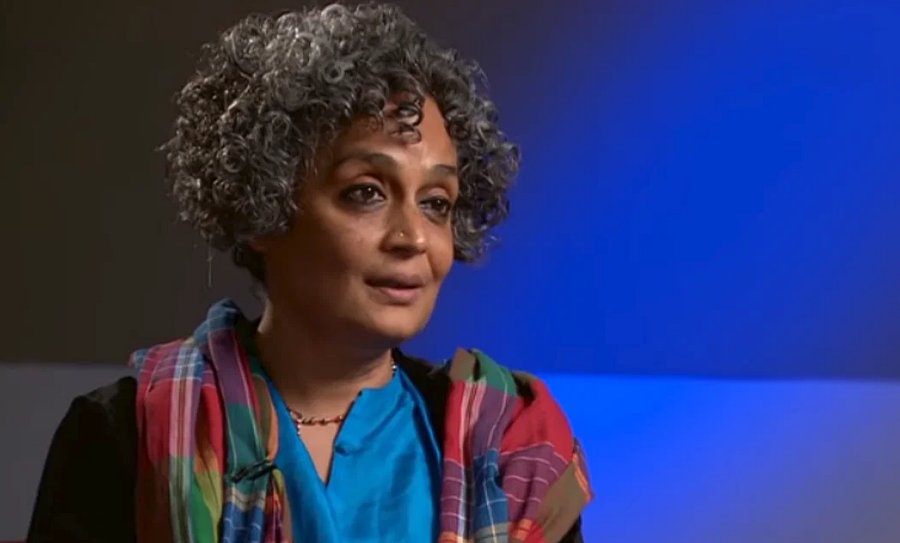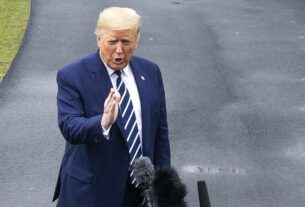Thu 25 July 2024:
India’s government is targeting the acclaimed author because she speaks to the most foundational corruptions that underlie the socioeconomic and political pillars of the Indian state.
After they unexpectedly lost their parliamentary majority in this year’s election and were forced to enter into a coalition government, I predicted that India’s governing Hindu nationalists would scale up their attacks on their critics to try and reassert their hegemony over Indian politics.
Regrettably, it did not take long for my prediction to be realised.
Just days after the election, an official from the new BJP-led government allowed the Booker prize-winning Indian author and activist Arundhati Roy to be prosecuted for remarks she made at a panel discussion back in 2010 suggesting that Kashmir was never an integral part of India.
The prosecution was granted under the draconian Unlawful Activities Prevention Act (UAPA), which is often used against individuals the Hindu Nationalist government deems antinational, unpatriotic and sympathetic to terror groups.
This latest attack on Roy is indicative of the growing insecurities of the BJP leadership after a less-than-stellar election performance. But the acclaimed author is not being punished simply because she happened to say or do something that challenged the BJP’s authority. She is not just an ordinary critic who spoke her mind and happened to upset a party heavyweight.
Roy is being targeted because she has an inherent ability to speak to some of the most foundational corruptions that underlie the socioeconomic and political pillars of the Indian state. And while it is on the back foot electorally, this ability deeply frightens the BJP.
It is no coincidence that the comments Roy is being prosecuted over are related to Kashmir. The vehement denial of Kashmiri rights as well as the violent suppression of the Kashmiri liberation movement has long been the hallmark of muscular Indian nationalism. As Nazia Amin wrote recently, “Kashmir is one of the sites where the tyrannical core at the heart of Indian nationalism gets expressed in its most blatant and persistent form.”
This tyranny has been on display for decades. Between the late 1980s and early 2000s, for example, the Indian armed forces are believed to have forcefully disappeared between 8,000 – 10,000 Kashmiri men. They have been missing for years, but cannot be officially declared dead. The wives of these men, known as “half widows”, and their children, are left with little legal protection and often struggle with poverty and even homelessness.
In the 1990s, Human Rights Watch reported (PDF) that the Indian armed forces in Kashmir were routinely using rape as a weapon of counterinsurgency. It was being used to target women “accuse[d] of being militant sympathisers”. By raping these women, Indian forces wanted to “punish and humiliate the entire community”. Reportedly, rape was also a tool of reprisal, used against civilians living in areas where fighters had ambushed the armed forces.
In the 2010s, the security forces started using pellet guns as a “nonlethal” weapon for crowd control. Yet, in 2016, this nonlethal weapon led to what has been described as “mass blinding” – ie, hundreds of eye injuries from the more than a million pellets that were fired on protesters in the Kashmir valley.
Equipped with legislation that gives them emergency powers for maintaining public order, the Indian forces have a well-documented history of torturing and even killing detainees from Kashmir. Since the revocation of Jammu and Kashmir’s autonomous status in 2019 – a key Hindu nationalist campaign promise – the Indian state has also intensified its arbitrary detentions and arrests of opposition politicians, journalists and activists.
At the same 2010 panel where she claimed that Kashmir wasn’t an integral part of India, Roy had also said, “Kashmiris cannot inhale and exhale without their breath going through the barrel of an AK-47”. Elsewhere, in her writings, Roy has been uncompromising in her call for Kashmiri liberation.
In various speeches, essays and statements, Roy has levied existential attacks on the deep corruption that underlies Indian presence in Kashmir, shed light on the tyranny of the Indian nationalist claim of sovereignty over the valley and, by calling for Kashmiri independence, unsettled a taken-for-granted understanding of the geographical limits of the Indian state.
Roy has also levied a similarly existential attack on India’s model of economic growth and development, which, in the eyes of many, requires that some suffer for the greater good of national progress.
This logic was written into the very foundations of the country. When India’s first Prime Minister Jawaharlal Nehru inaugurated the Hirakud Dam over the Mahanadi River in 1948, he said to the villagers whose lives and livelihoods would be adversely affected by the project that “if you have to suffer, you should do so in the interest of the country.” Nehru had also famously described dams as modern temples, “necessary for the nation’s economic progress”.
Roy pointed to the fallacy of this ethos of national progress in a 1999 essay in which she supported the Narmada Bachao Andolan (NBA) – the movement protesting the construction of the Sardar Sarovar dam on the Narmada River due to its detrimental impact on the environment and the lives of farmers and tribal communities.
She wrote: “Big Dams are obsolete. They’re uncool. They’re undemocratic. They’re a Government’s way of accumulating authority (deciding who will get how much water and who will grow what where)…They’re a brazen means of taking water, land and irrigation away from the poor and gifting it to the rich. Their reservoirs displace huge populations of people, leaving them homeless and destitute. Ecologically, they’re in the doghouse. They lay the earth to waste.”
In later years, Roy has described the significance of the struggle over the Narmada Valley as a struggle over modern India where the powerful are pitted against the powerless. It was, as she describes, “a peg, or a keyhole, to use to open a very big lock” that involves not just a river, but complex questions of development, the environment, the caste system and class in a modernising postcolonial state.
The dam eventually went up and this logic of national progress continued unabated. Yet, the prescience of Roy’s assessment of the ills of this model of progress is all the more apparent today – and the BJP is undoubtedly aware of this.
As she rightly points out in Capitalism: A Ghost Story, an emergent India is also a place where the ultra-rich and ever-growing middle class live alongside “dead rivers, dry wells, bald mountains, and denuded forests; the ghosts of 250,000 debt-ridden farmers who have killed themselves, and of the 800 million who have been impoverished and dispossessed to make way for us. And who survive on less than twenty Indian rupees a day.”
Of course, Roy acknowledges, there is no space for a conversation on land or wealth redistribution. Those eager to make India a global force would deem this “undemocratic” or even “lunatic”. Yet, the same people don’t seem to notice the lunacy of say the millions left landless, living in abject poverty, in slums in towns and cities. Presumably, they are the ones who must suffer for the nation’s progress.
Roy was recently awarded the PEN Pinter Prize. The prize is reserved for writers who “cast an unflinching, unswerving gaze upon the world” and display a “fierce intellectual determination … to define the real truth of our lives and our societies”.
Roy’s unflinching, unswerving gaze is undoubtedly needed as politics in Modi’s India is a heady concoction of religious nationalism, authoritarianism and capitalism. Her fierce intellectual determination to speak truth to power is a welcome anomaly at a time when critical voices are so easily silenced. This is why, in the aftermath of its election upset, the BJP is so eager to target and silence her at this moment. But Roy’s voice of dissent is not just valuable today. The significance of her writings and advocacy is timeless, as Roy speaks for freedom and justice for the most marginalised in a way that finds relevance and transcends, far beyond the current, dismal political moment.
The statements, views and opinions expressed in this column are solely those of the author and do not necessarily represent those of Independent Press.
Author:

______________________________________________________________
FOLLOW INDEPENDENT PRESS:
WhatsApp CHANNEL
https://whatsapp.com/channel/0029VaAtNxX8fewmiFmN7N22
![]()
TWITTER (CLICK HERE)
https://twitter.com/IpIndependent
FACEBOOK (CLICK HERE)
https://web.facebook.com/ipindependent
YOUTUBE (CLICK HERE)
https://www.youtube.com/@ipindependent
Think your friends would be interested? Share this story!





